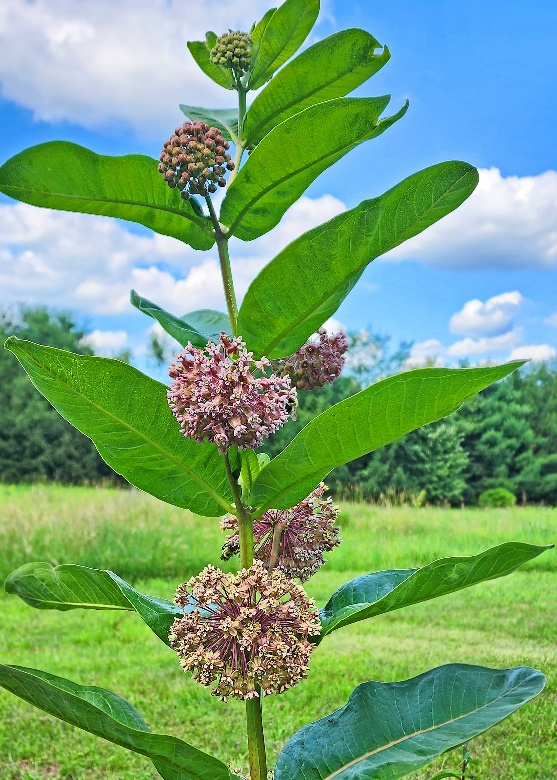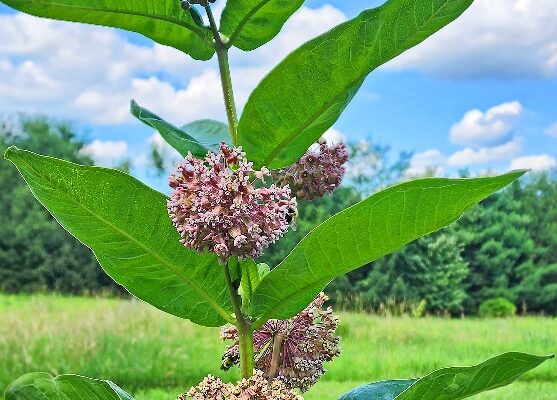Rural Perspectives: Common milkweed attracts butterflies, bees

Common milkweed grows along roadsides,
farm field edges and in naturalized gardens.
Photo credit: Diane Constable
by Diane Constable
Our native common milkweed (Asclepias syriaca) gets the first part of its scientific name from Asklepios, the Greek god of healing and medicine, as the plant was known to have many medicinal uses. We can see it growing along roadsides, farm field edges, and in naturalized gardens to attract and feed butterflies and bees.
Milkweed can be 2 feet to 6 feet tall, with thick large leaves and a fibrous stem. It has a white, thick, bad-tasting sap that can be seen when a leaf or stem is broken. The plant has beautiful “balls” of flowers, with mixed colors of light to dark shades of mauve and pink. In the fall, when the seeds are ripe, the 3- to 5-inch-long seed pods pop open. Then the small seeds with silk-like fibers are carried off and dispersed by the wind. A plant can live up to 25 years.
The plant has many uses. Seed silk has been collected and used for early lifejackets and pillow stuffing, and to produce a type of rubber. The stems have been used to make cords and paper, and although the sap can be poisonous, some of its properties have been used to create various heart medications. Also, Native Americans prepared the plant properly so it could be used for food, medicines, rope fiber and fibers for cloth making.
Fun Fact: Milkweed has a very important role in the life of the beautiful monarch butterfly, as it is the only host plant for its caterpillars. The butterfly lays her eggs on the underside of the leaves and the caterpillars feed on the plant, safely ingesting and absorbing the poisonous sap, which gives it a bad taste to protect it from predators. This protection stays with it, even after it becomes a butterfly.
 Diane Constable is an avid photographer. She serves on the Unadilla Township Planning Commission and is a member of the township’s Parks and Recreation Committee. Diane also enjoys her dogs and gardening.
Diane Constable is an avid photographer. She serves on the Unadilla Township Planning Commission and is a member of the township’s Parks and Recreation Committee. Diane also enjoys her dogs and gardening.


